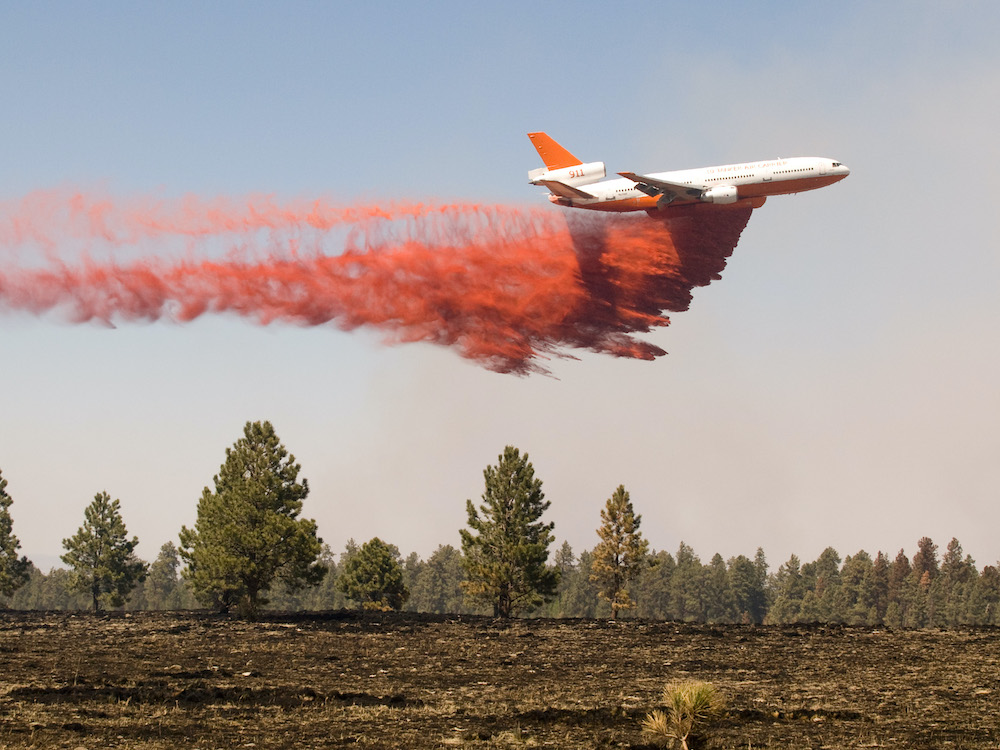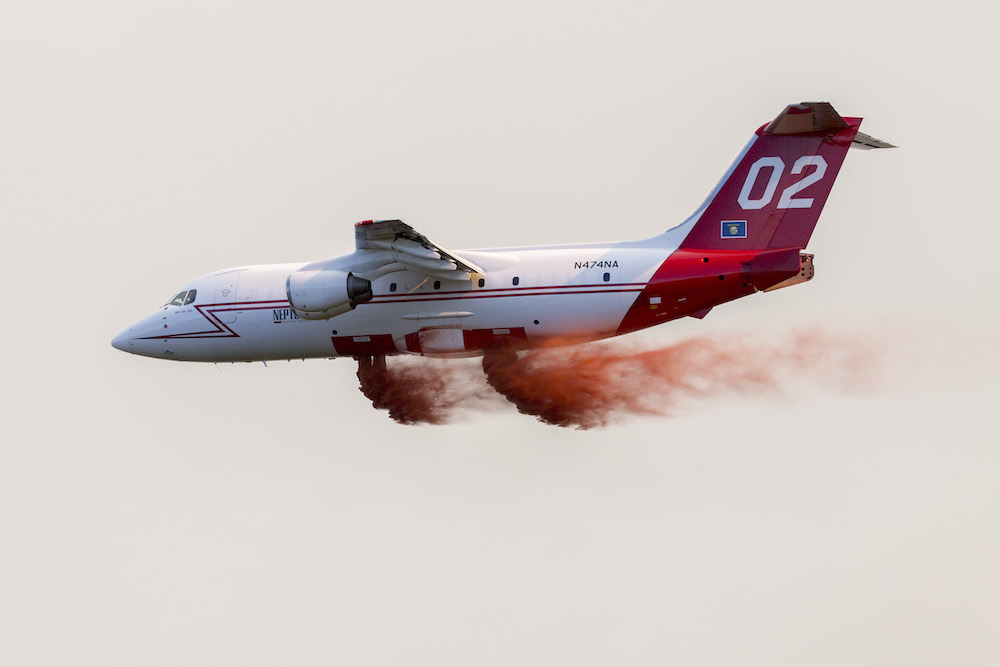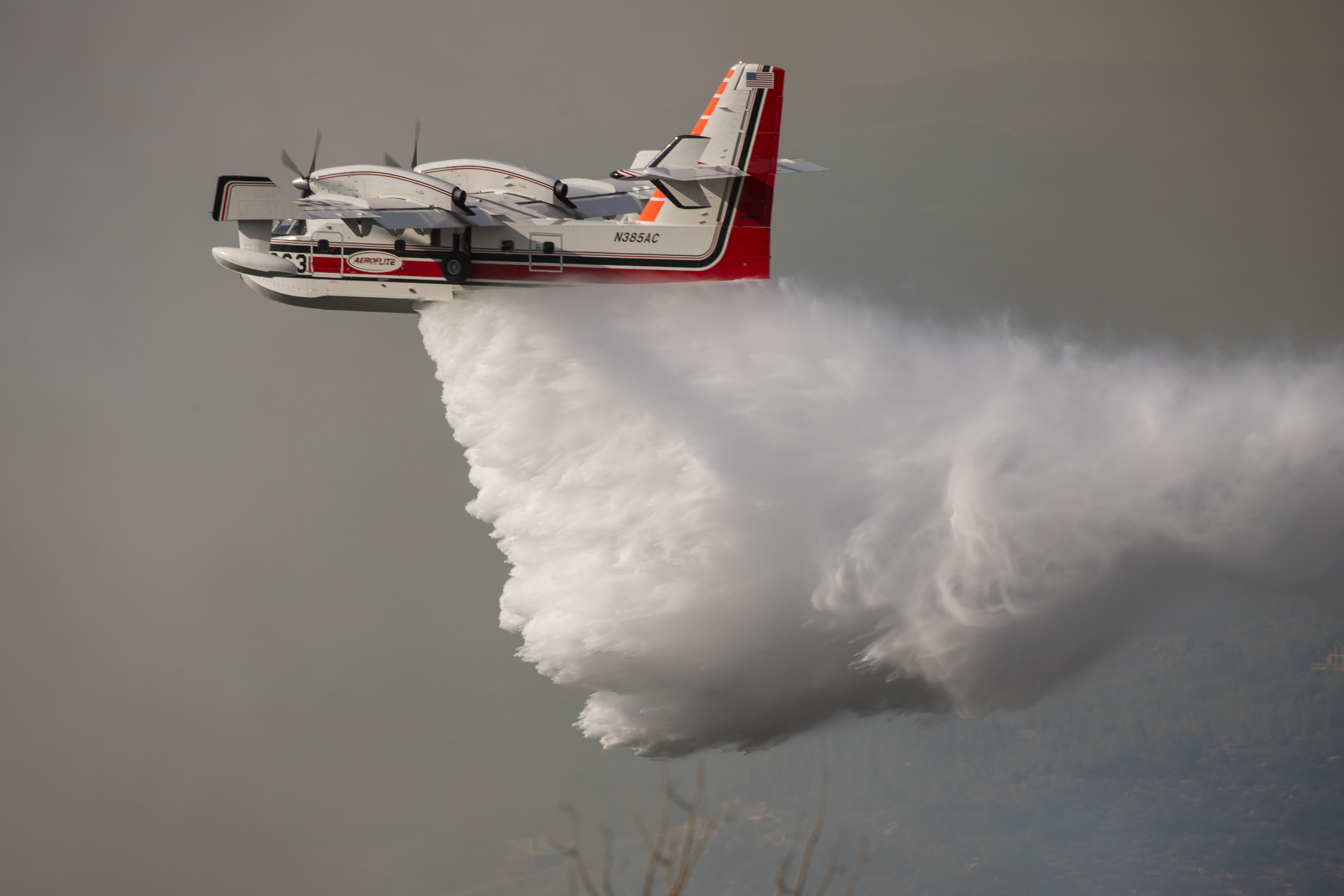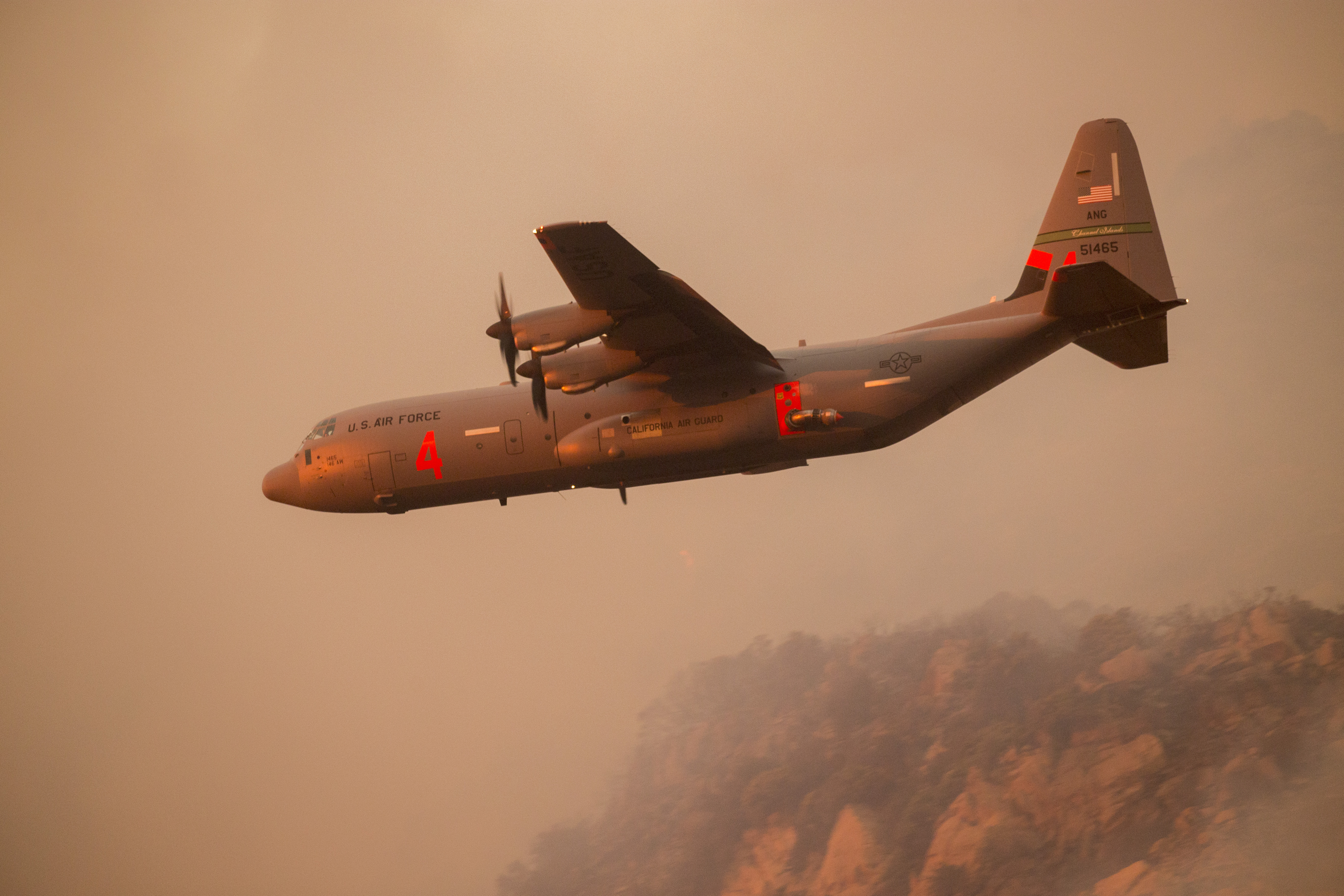Very Large Airtanker
These airtankers, also referred to as VLATs, can deliver thousands of gallons of fire retardant at one time. Because of their size, they are less maneuverable than smaller airtankers. VLATs drop fire retardant at least 250 feet above the top of the vegetation.
The DC-10, which can be used to support wildland firefighters on the ground, can deliver up to 9,400 gallons of fire retardant at one time. The U.S. Forest Service is responsible for managing the VLAT contracts.
Water Scoopers
Water Scoopers are amphibious aircraft that skim the surface of a body of water and scoop water into an onboard tank and then drop it on a wildland fire.
Some Water Scoopers can hold up to 1,600 gallons of water. It can take as little as 12 seconds to fill the tank to capacity. The aircraft can scoop from water sources that are about 6.5 feet deep and 300 feet wide. Scoopers usually use lakes but can also scoop from rivers.
Scoopers are capable of dropping water on wildland fires from a height of about 100 to 150 feet above ground level.
Military Airborne Firefighting System (MAFFS)
MAFFS are portable fire retardant delivery systems that can be inserted into military C-130 aircraft without major structural modifications to convert them into airtankers when needed. MAFFS are large airtankers.
The MAFFS program, created by Congress in the early 1970s, is a joint effort between the USFS and Department of Defense (DoD). The USFS owns the MAFFS equipment and supplies the fire retardant, while the DoD provides the C-130 H and J model aircraft, flight crews, and maintenance and support personnel to fly the missions.












